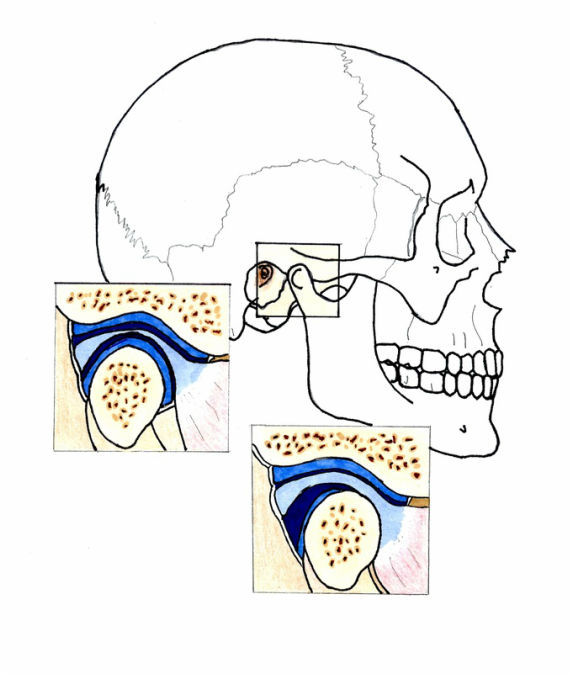
TEMPOROMANDIBULAR JOINT
What is the TMJ?
The temporomandibular joint (TMJ) is the name of the joint that connects the lower jaw, called the mandible, to the bone at the side of the head—the temporal bone. It is located on either side of your head, just in front of your ears. If you place your fingers just in front of your ears and open your mouth, you can feel the joints. The TMJ, which can rotate and move forward, backward and side to side, is considered one of the most complex joints in the body. This joint, in combination with other muscles and ligaments, lets you chew, swallow, speak and yawn. When you have a problem with the muscle, bone or other tissue in the area in and around the TMJ, you may have a Temprormandibular Disorder (TMD). The TMJ is a major factor in orofacial and craniofacial pain.
When we open our mouths, the rounded ends of the lower jaw, called condyles, glide along the joint socket of the temporal bone.
The condyles slide back to their original position when we close our mouths. A soft disc which lies between the condyle and the temporal bone keeps this motion smooth. Shocks to the jaw joint from chewing and other movements are absorbed by this disc. The TMJ is different from the other joints in the body. Because of the combination of hinge and sliding motions, this joint is among the most complicated in the body.
The TMJ is also made up of tissues that differ from other load-bearing joints, like the knee or hip. Because of its complex movement and unique makeup, and also because it is closed and opened thousands of times a day while eating, speaking, breathing, swallowing and yawning, the jaw joint and its controlling muscles can pose a tremendous challenge to both patients and healthcare providers when problems arise.
Disorders of the TMJ are often called Temporomandibular Disorders (TMD) or TMJ Dysfunction (TMJD).
What is the TMJ?
The temporomandibular joint (TMJ) is the name of the joint that connects the lower jaw, called the mandible, to the bone at the side of the head—the temporal bone. It is located on either side of your head, just in front of your ears. If you place your fingers just in front of your ears and open your mouth, you can feel the joints. The TMJ, which can rotate and move forward, backward and side to side, is considered one of the most complex joints in the body. This joint, in combination with other muscles and ligaments, lets you chew, swallow, speak and yawn. When you have a problem with the muscle, bone or other tissue in the area in and around the TMJ, you may have a Temprormandibular Disorder (TMD). The TMJ is a major factor in orofacial and craniofacial pain.
When we open our mouths, the rounded ends of the lower jaw, called condyles, glide along the joint socket of the temporal bone.
The condyles slide back to their original position when we close our mouths. A soft disc which lies between the condyle and the temporal bone keeps this motion smooth. Shocks to the jaw joint from chewing and other movements are absorbed by this disc. The TMJ is different from the other joints in the body. Because of the combination of hinge and sliding motions, this joint is among the most complicated in the body.
The TMJ is also made up of tissues that differ from other load-bearing joints, like the knee or hip. Because of its complex movement and unique makeup, and also because it is closed and opened thousands of times a day while eating, speaking, breathing, swallowing and yawning, the jaw joint and its controlling muscles can pose a tremendous challenge to both patients and healthcare providers when problems arise.
Disorders of the TMJ are often called Temporomandibular Disorders (TMD) or TMJ Dysfunction (TMJD).

